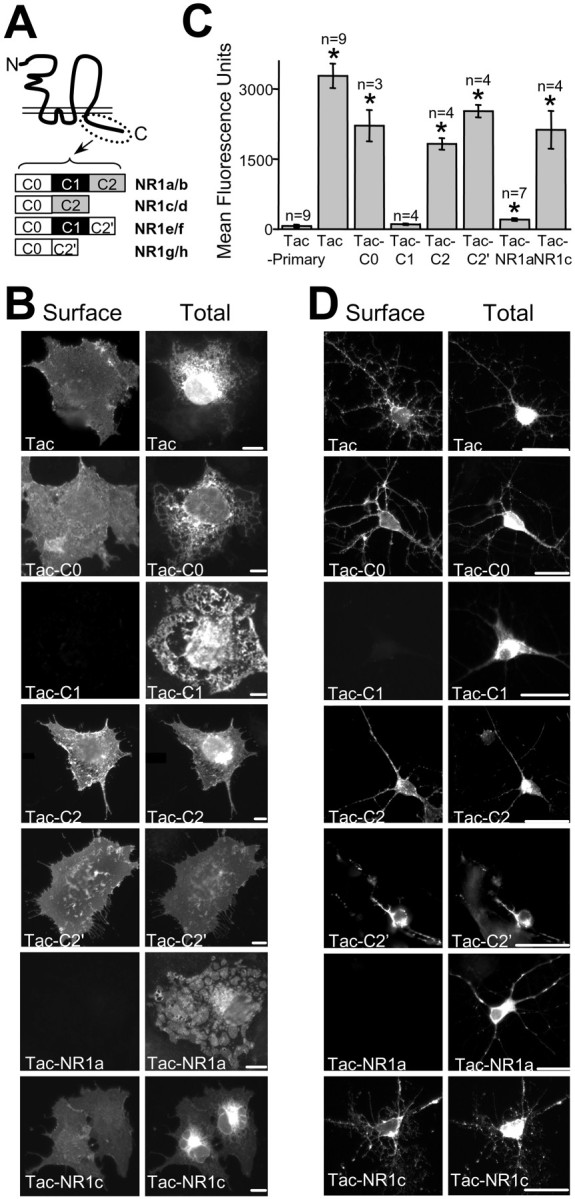Fig. 1.

The C1 domain of NR1 regulates surface expression of chimeric receptors in both heterologous cells and hippocampal neurons. A, Schematic representation of NR1 splice variants possessing distinct intracellular domains is shown. The N terminal (N) and C terminal (C) ends of the protein are indicated.B, Surface and total expression of Tac–NR1 receptors in COS cells is shown. Live cells were labeled with a monoclonal anti-Tac antibody (Surface,left), permeabilized, and labeled with polyclonal anti-Tac (Tac, Tac–C0), anti-C1 (Tac–C1, Tac–NR1a), anti-C2 (Tac–C2, Tac–NR1c), or anti-C2′ (Tac–C2′) antibodies (Total, right). The C1-containing receptors Tac–C1 and Tac–NR1a are not expressed on the cell surface.C, Quantification of Tac–NR1 chimeric receptor surface expression by flow-assisted cytometry is shown. Data represent means ± SEM of fluorescence intensity of transfected HEK293 cells stained live for the presence of Tac on the cell surface (*p < 0.05 relative to Tac minus primary antibody control, one-way ANOVA). D, C1-containing receptors do not reach the plasma membrane of cultured hippocampal neurons. Surface (left) and total (right) receptors were localized by immunofluorescence as described in A. Scale bars: B, 10 μm; D, 25 μm.
